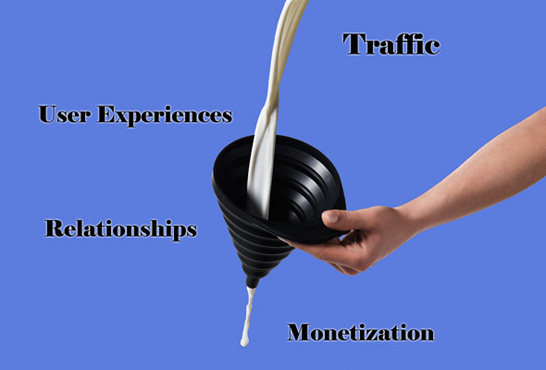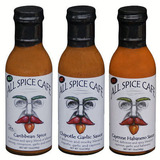
The most basic answer to how we get more $ coming out of the bottom of the funnel is to add more people to the top. Driving more traffic is an obvious goal and it is often the focus of online marketing activities seeking the classic hockey stick graph depicting a steep climb in site visits. For online conversion analysis, it is stop number one.
In fact it goes back to sales 101. My first sales manager at Merrill Lynch a thousand years ago (ok, maybe not quite that long) used to say that you know how many people you have to speak with on average to get a prospect. If it takes 20 conversations to get a live prospect, you should be excited each time you get a “no” because you are 5% closer to “yes”. While this was mainly a tactic to help sales people overcome the negative impact of being told “no” all the time, it actually spoke to a more important aspect of sales in general. It takes large volumes of input to get a reasonable output. Back then it meant, “make more calls”. Now it means “drive more traffic”.
There are countless ways to drive traffic to your site or store. Each one is measurable in its own way and each one has its advantages and disadvantages. We will drill into the specifics of each traffic driving tactic in later posts, but a non-exhaustive list in no particular order includes such things as paid search (adwords, etc.), natural search, affiliate programs, social media, direct outreach through email, referred traffic from links, word-of-mouth and viral marketing, etc.
It should also be mentioned that “traffic” is not always measured as visits to a website. In a later post, I will discuss how online interactions and “touchpoints” are increasingly taking place off the site, through such points of interactions as embedded widgets, the reading of feeds, etc.
All website analytics packages give marketers visibility into the source of their traffic and help them track which of their traffic driving programs are yielding the best results for growth in visits. Where measurement becomes trickier is when you start to look at the impact increased traffic has on your downstream metrics. This is key. It is not simply enough to focus on each step in the funnel as a separate and unrelated metric. You cannot assume that new volumes of traffic from new sources or new campaigns will behave and convert as the previous flows did. If you are lucky enough to be in a business where your conversion rates are rock steady regardless of who walks in the door, lucky you. The reality is that different subsegments of visitors will behave very differently at each step in the funnel. Visitors driven by paid search will act differently across the search engines that send them, the keywords in the search, their own geography, etc.
The important lesson here is that even when focusing on step one in the funnel, marketers must follow new traffic flow all the way through the process to determine if the effort or expenditure is worth the cost in time or dollars. Now, don’t get me wrong. There are secondary benefits to site traffic beyond whether a specific visitor ultimately monetizes – growth in your brand recognition, potential referrals through word of mouth, additional links to your site, etc. But if you have limited resources and need a direct ROI on your investment, you can’t simply grow the top of the funnel without following each new segment through the whole process.
At the end of the day, online marketers should be able to calculate the cost of a given visit and match it up with the ultimate revenue over time driven by that visit. It is then that differences in business model have the biggest impacts on whether a given traffic driving campaign makes sense. If you sell stuff and most transactions are one time events, you need to make that cost of acquisition fit in a very defined and limited range. If your model drives recurring revenue (through subscriptions or upgrades, etc.) you can afford to spend more to acquire the first transaction and thus more on driving the original visit.
The big lesson is to measure your cost of traffic driving but consider the needs of your business before you determine if a campaign is worth the traffic it drives.
Of course, many “traffic driving” programs involve the need for content on your site. Whether it is creating “linkbait” for SEO or creating informative content to drive word of mouth or return visits, the user experience is part of what drives the traffic itself. Thus, looking at each step in the funnel is often a fuzzy exercise at best, since they are so intertwined. In the next post in the series, we will look at the initial user experience as step two in the funnel.
Photo by flrnt.




 description, echoed by lots of people around the web, is that it is the “etsy” of artisan food.
description, echoed by lots of people around the web, is that it is the “etsy” of artisan food.